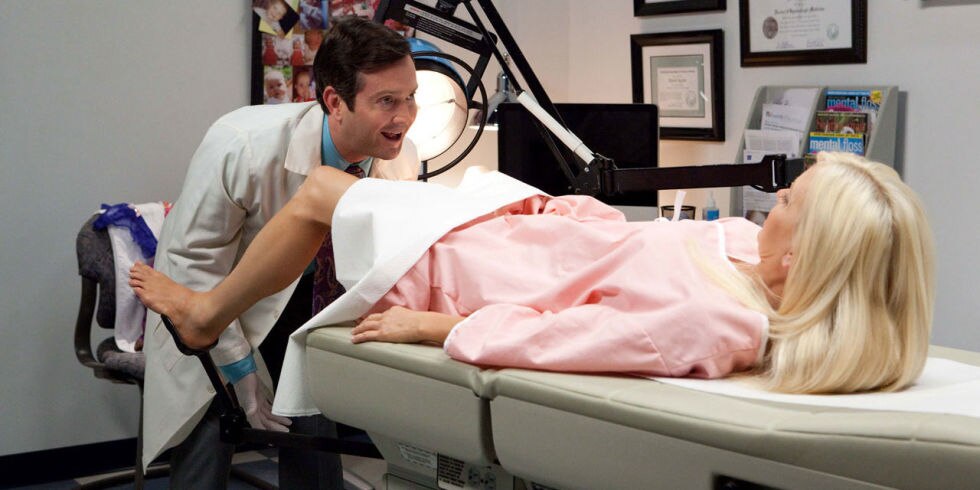12 Shocking Things You Didn't Know About Yeast Infections
You may have one and not even realize it. Yikes.

Yeast infections. You say the phrase and it immediately conjures images of itching, burning, and lots of wiggling around in your seat. It almost makes you automatically clench up your vaginal muscles, as if that could prevent unwanted intruders from disrupting your sexual health, doesn't it?
Go ahead and unclench. Yeast infections, while not exactly pleasant, aren't the end of the world, says Lisa Masterson, M.D., a practicing ob-gyn and former co-host of The Doctors. "Most women get super anxious about them, wondering how they got it, what this means for their long-term health, and how to treat it," she says. "But it's a super treatable infection that isn't going to haunt you forever."
So even if you think you know everything there is to know about yeast infections, read on. The shocking statistics — and myth-busters — may surprise you.
1. Yeast infections are ridiculously common...and most women don't know what to do about them.
Three out of four women are diagnosed with a yeast infection at some point in their life, according to a recent survey. But 53 percent of women don't have a clue on how to deal with them, and two-thirds don't know how to cure them. Which explains why Monistat, the makers of a treatment cream for yeast infections, launched their Time for TMI campaign — with it being such a common infection, there's no reason for you to not understand what's happening with your vagina.
2. It isn't anything like an STD.
According to that same survey above, 81 percent of patients that come in to treat a yeast infection fear that it was sexually transmitted through their partners, or that having sex led to it. Point blank, it wasn't. Not even close. A yeast infection, in fact, is simply a pH imbalance inside of the vagina that leads to a buildup of yeast, and it's often caused by your hormones going out of whack, explains Masterson. "It can be caused by a myriad of things — hormonal contraceptives like the Pill, stress, a weakened immune system because you're tired or not sleeping well, and environmental conditions, like staying in your sweaty clothes or wet bathing suit."
3. It's also different from a bacterial infection.
Even more commonly than the STD thought is the misdiagnosis of a yeast infection, or the assumption that it's like — and therefore treated the same as — a bacterial infection. "They both fall under the heading of vaginitis, or inflammation of the vagina, and bacterial vaginosis can sometimes be confused with yeast infections because the symptoms are similar," says Masterson. "But bacteria shifts the vaginal pH in a different direction, and requires an antibiotic to clear it up, while a yeast infection needs an anti-fungal cream."
4. You can diagnose yourself at home.
There isn't a critical need to rush to your gyno if you think you might have a yeast infection. Tests like Monistat's Vaginal Health Test are sold over the counter, and they check your vaginal pH to help you distinguish whether something's a yeast or bacterial infection. So if you have the classic symptoms — fishy odor, abnormal discharge, and/or itching or burning — use the strip test to check your vagina's acidity level. If it comes back normal after 10 seconds, it's likely a yeast infection, so grab an anti-fungal cream for treatment. If not, it could be a bacterial infection that requires antibiotics and a chat with your ob-gyn, like bacterial vaginosis or trichomoniasis. "Either way, taking the test helps clear the infection sooner because you're not wasting any time on a treatment that won't work for the specific type of infection that you have," says Masterson.
5. They're not chronic.
To the 67 percent of women who think yeast infections can never be cured, take a deep sigh of relief: Just because you get one doesn't mean you're doomed for the rest of your life. "Each case is individual, and you can cure each one," explains Masterson. "It does not increase your risk of getting more down the road. So you just take the proper treatment, wait a full week — which is how long it takes to cure a yeast infection, even if you only need to treat symptoms for one day — and then it's gone for good."
6. You'll probably get more after having babies.
Sorry, moms, but Masterson says you're more likely to get a yeast infection after you've had children. In fact, many women don't experience their first one until they're either pregnant or have just had children because of the hormonal shift that occurs. "The hormone prolactin, which lets down milk and helps with breastfeeding, encourages other hormones to stick around, and it can cause the pH imbalance," she explains. "It can even stop your periods and make your body feel like it's almost in a menopausal state; menopausal women have an increased risk of yeast infections as well."
7. Just because you don't have symptoms doesn't mean you don't have an infection.
Unfortunately (or fortunately, depending on how you look at it), not every woman experiences the usual itching, burning, weird discharge symptoms right away. In fact, if you're not super sensitive, you may not realize you have one at all. "Some women will come in for their regular Pap smear and I'll notice a colonization of yeast, and it's the first time they're even thinking about it," says Masterson. "It depends on the sensitivity of the person. For one woman who's really sensitive, a small colonization can cause a lot of itching and burning. For another, it takes a larger buildup of yeast to cause those symptoms." That said, it's not a big deal if you don't treat it right away, she explains. So long as you're not experiencing symptoms that are causing you to be uncomfortable, it's okay if it's treated later.
8. Too much sugar can up your risk.
Wait, your sweet tooth may be causing issues with your — vagina? Actually, yes. Yeast thrives on sugar, so eating too much of it may increase your chance of developing the obnoxious infection, says Laurie Birkholz, M.D., a doctor specializing in women's health in Holland, MI. If it seems like you're always getting another yeast infection, you may want to monitor your diet and skip out on too much of the sugary stuff.
9. Yes, your partner can catch it from you.
Not only can sex hurt (because vaginal tissue is already sensitive and irritated), a yeast infection can be passed on to your partner, Birkholz says. While it's not considered an STD, as previously mentioned, having unprotected sex while you're dealing with an infection can lead to an itchy rash on your guy's penis. Uh, ouch. That, plus the fact that getting it on, may delay the amount of time it takes you to heal (sex can cause the medical cream you're using to pull a disappearing act), so you may want to wait until you've been treating your infection for a few days before engaging in anything hot and heavy.
10. Your gym clothes may be to blame.
If your post-workout routine involves collapsing on the couch — because, hello, you just killed that spin class, so you can be lazy forever, right? — you might want to think again. "Lounging around in sweaty clothing creates an environment that's conducive to yeast growth," Birkholz says. "It's best to change out of your workout gear and put on dry clothes as soon as you're done at the gym." That's an easy way to prevent trouble.
11. Cranberry juice might be doing more harm than good.
Cranberry juice has been long known to help get rid of yeast infections, but it can also cause the problem in the first place. According to the Mayo Clinic, the juice might help cure a yeast infection — but when consumed on a regular basis, it might also cause them to keep reoccurring. So drink up, but stick to water as your go-to beverage.
12. Using perfumed feminine products and laundry detergent can case them.
You might think using scented soaps, douching, and washing your laundry — delicates, in particular — is good for your nether regions, but that's not the case, says the Cleveland Clinic. Since your vagina is sensitive, using perfumed or heavily-scented products might actually be the reason your yeast infection showed up. Instead, stay nice and fresh with a mild soap and grab some fragrance-free detergent when it comes time to wash your underwear.
more from Life

Can a sunshine folder help cure your imposter syndrome?

How to build emotional intimacy with your partner

I switched multiple jobs until I found the career I was meant for and that's okay

The finest eateries across Mumbai, Goa, Hyderabad, Bengaluru, Delhi, and Pune

Here's breaking down Beyoncé's haircare routine and it's simpler than we imagined

Bollywood couples with the most adorable Instagram game

Amidst uncertainties of life, here's how crocheting healed me

How skincare date nights with boo can bring you closer

Make summer 2024 hotter with these steamy reads

Sex tips to keep in mind during this Mercury Retrograde
